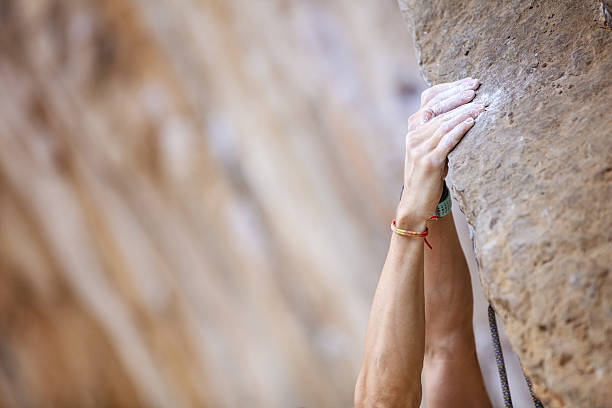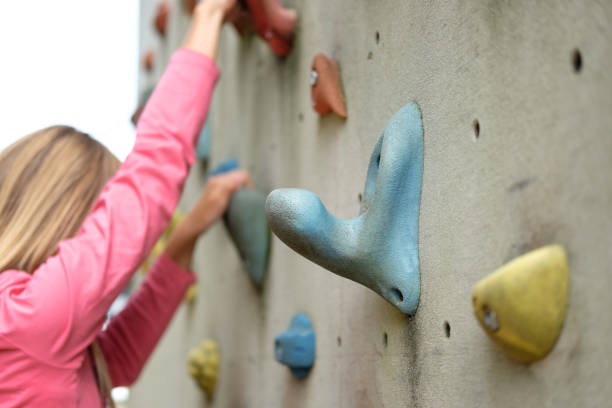Venturing into the world of rock climbing can seem daunting because of the variety of gear and safety aspects required. However, you should not feel deterred. Rock climbing is a versatile sport that offers plenty of safe starting opportunities.
The easiest way to start rock climbing is by going to an indoor rock climbing gym where the regular outdoor climbing experiences will be replicated but in a safer environment. They tend to use artificial walls, with various routes of different difficulty levels.
Using an indoor climbing gym is a great way learn and practice all the skills of rock climbing, safely, and to experience the different rock climbing disciplines which are called bouldering, lead climbing and top roping.
So, if you want to learn to rock climb, it’s important to understand the difference between the three types of climbing:
Bouldering
Bouldering is often the starting point for newbie rock climbers because it requires no special equipment and minimal training. Bouldering involves climbing without any kind of harness or rope, just relying on your own hands and feet.
It is normally carried out with a height limit of around 20 feet and crash mats are always used in case a climber should slip and fall. There are many indoor gyms dedicated solely to this kind of rock climbing.
It is a popular form of fitness exercise as it builds up stamina and strength, as well as enhancing your concentration levels and hand co-ordination. Bouldering requires only climbing shoes and chalk to keep your hands dry.
It is made more competitive by creating problem areas such as overhangs, or gaps between the boulders, which can be practiced safely in an indoor gym, but would prove more challenging when climbing actual rock faces.

Top roping
The next level of rock climbing is called top-roping, which is one of the most popular versions of indoor and outdoor rock climbing. With this type of climbing a rope is anchored to the top of the climb and is then belayed to the ground.
This means when the climber is ascending, they can rely on the rope to prevent falls and also to help them climb over more difficult areas, making it a less physically strenuous climbing experience than bouldering.
With top roping there are more options for carrying out this particular form of climbing out in the natural world as there is no height limit and the rope provides an element of safety in preventing the climber from falling.
Sport climbing
While top roping involves fixing temporary ropes where the climb is going to take place, sport climbing uses a designated route which has ready fixed bolts for the lead climber to attach the rope and his harness to as he goes up.
Also read: The Best Carabiners of 2021 – Reviews
One of the risks with this type of climbing is the potential for the climber who goes first to attach the rope, to fall a great distance. The pre-determined route is permanently bolted so climbers following these can only go where the route takes them.

Traditional climbing
This form of rock climbing sees the lead climber putting up removable protection for climbers, which is then taken away as the climb is completed. So the route is not fixed like a sports climb and provides more opportunity for exploring.
Also read: 16 Best Climbing Harnesses – 2021 Reviews
There are no limits or boundaries and traditional climbers can go wherever they want to as long as they have the right equipment to take with them. It is riskier than sports climbing because the route is not tried and tested.
It is felt that traditional climbing is more environmentally friendly than sports climbing as there is no permanent damage to the rocks involved and all of the equipment is removed and taken away at the end of the climb.
Free soloing
Perhaps the most extreme form of rock climbing and not one for the beginner or the faint-hearted is free soloing. This is when a climb works alone and without any kind of protective equipment. They rely solely on their ability and climb to any height they choose. This is the most dangerous version of the sport and is only undertaken by a few very experienced specialists.

Conclusion
When it comes to rock climbing there are many different techniques to think about, depending on the type of experience you are looking to have. Whether you learn your skills at an indoor gym, before practicing outside, or you choose to use rock climbing indoors as an addition to your exercise regime, the opportunities to enjoy this sport are endless.
From bouldering with little equipment, to top roping; from traditional climbing to free soloing, there really is a form of rock climbing to suit every skill level and every fitness and strength level.





